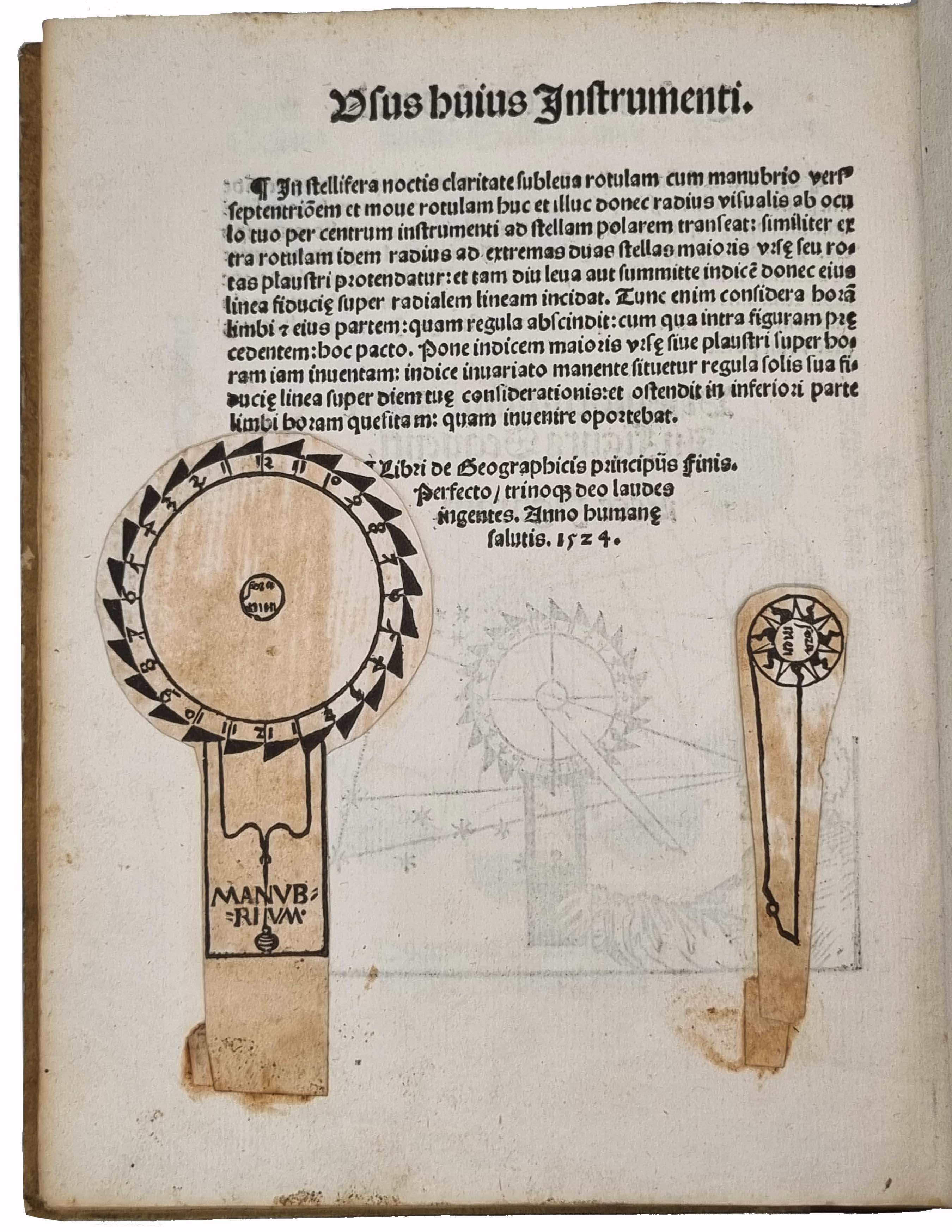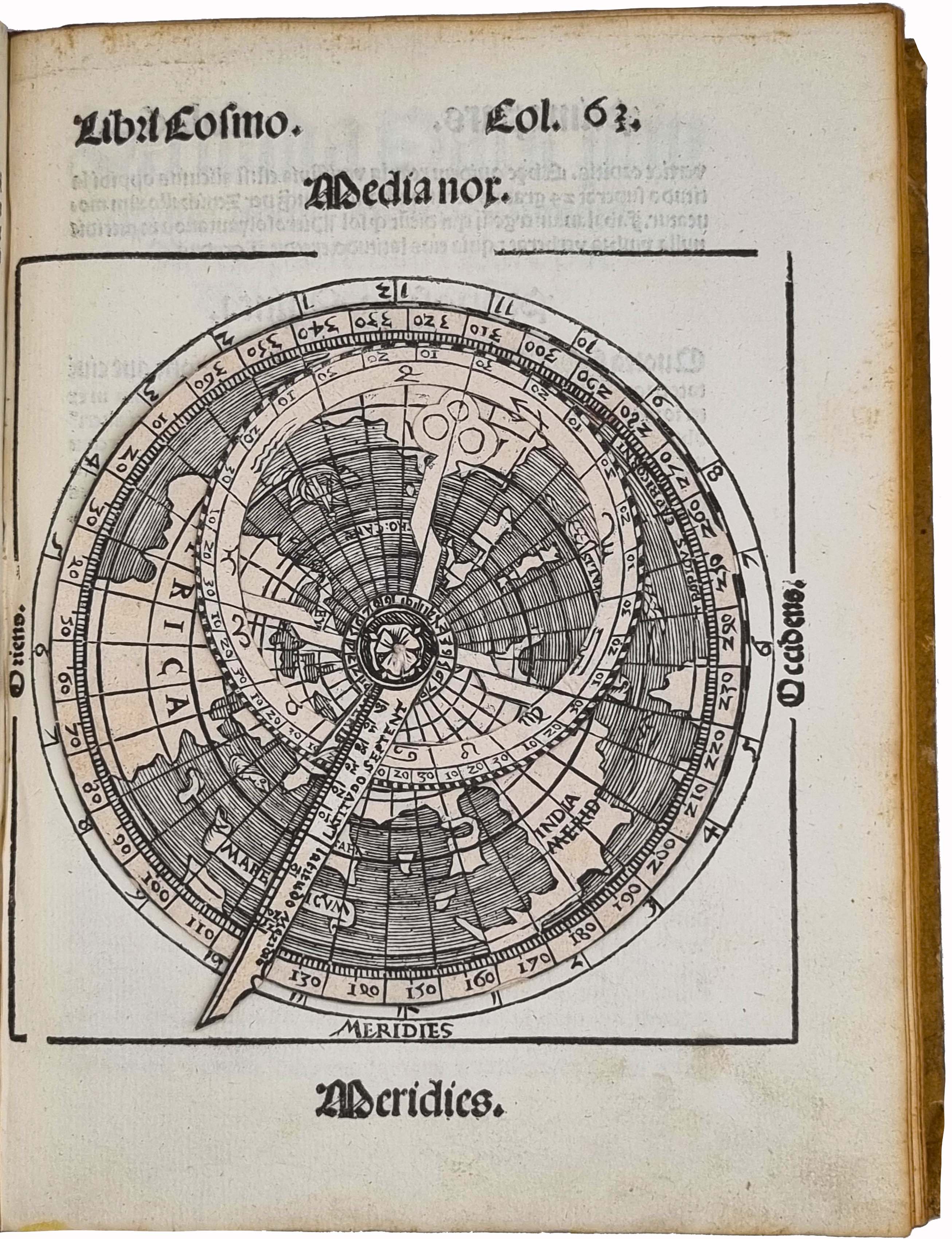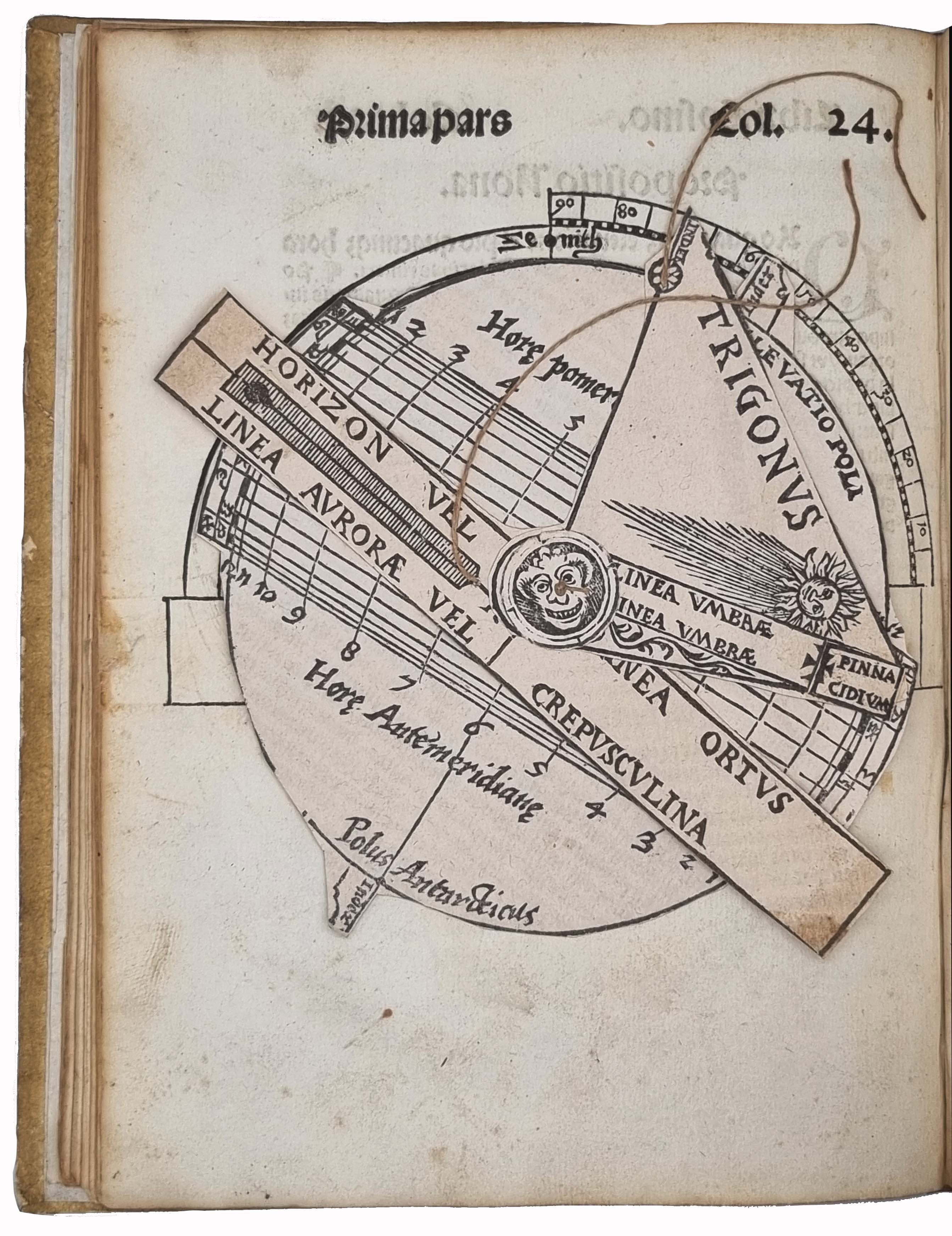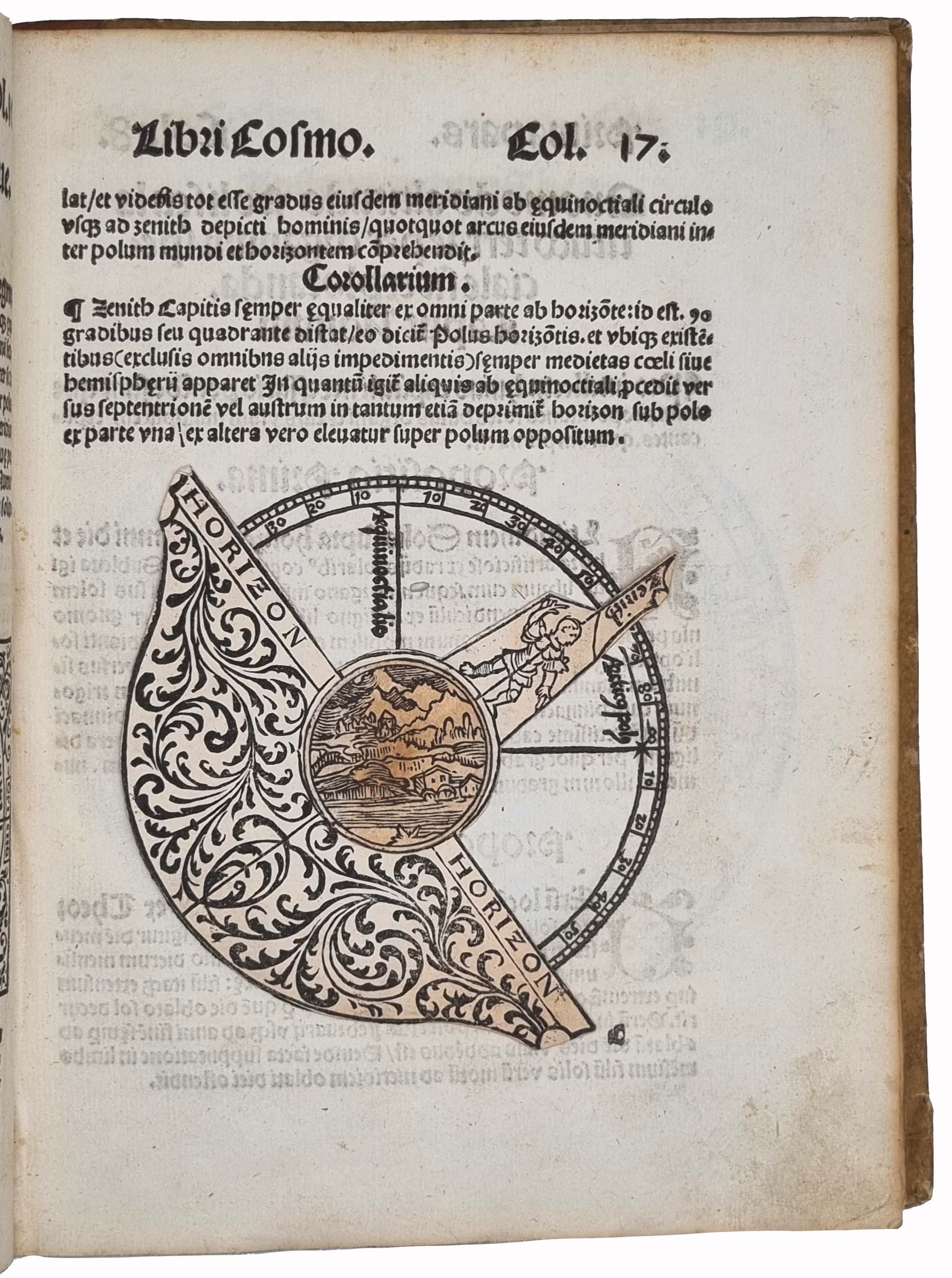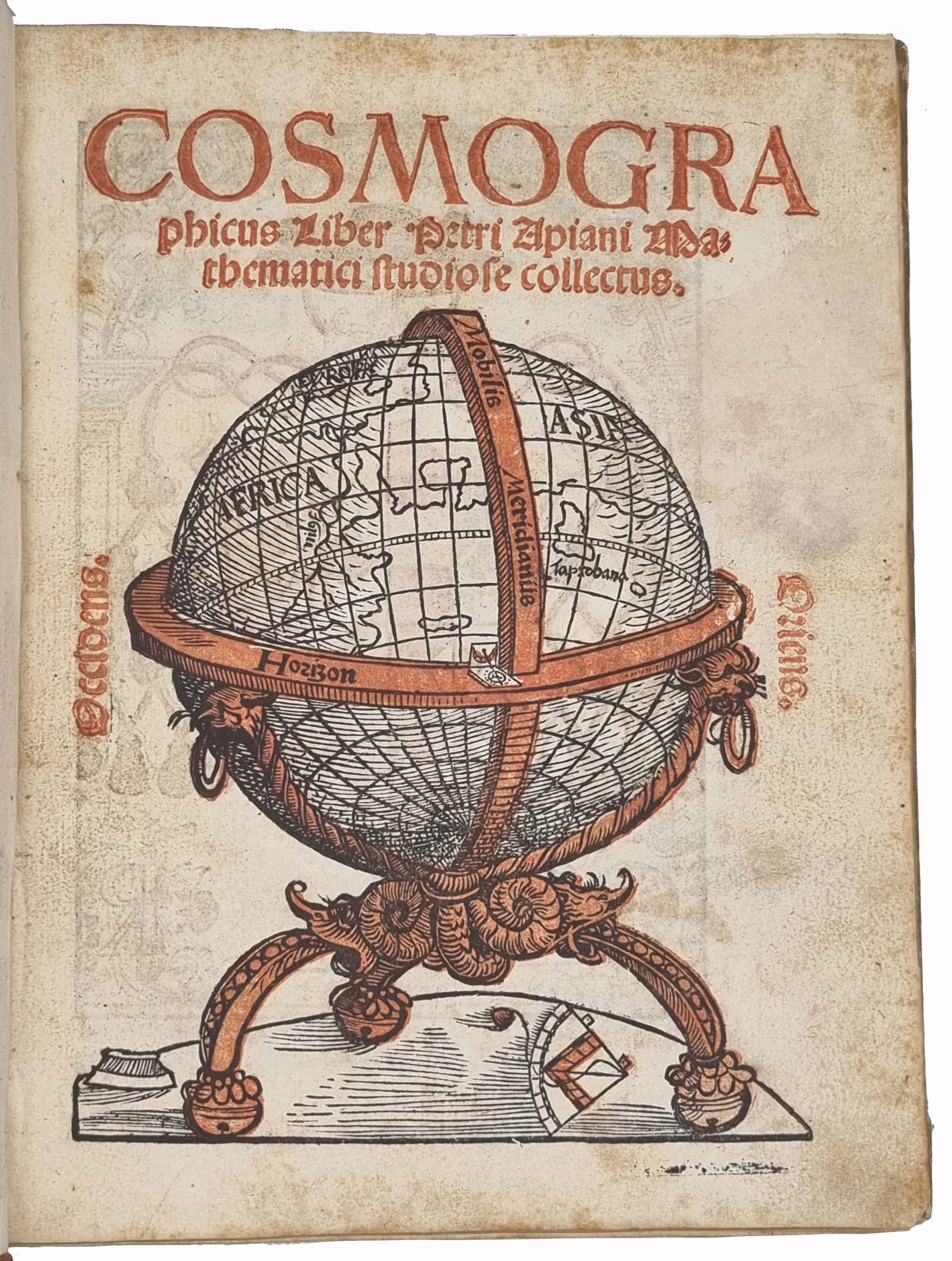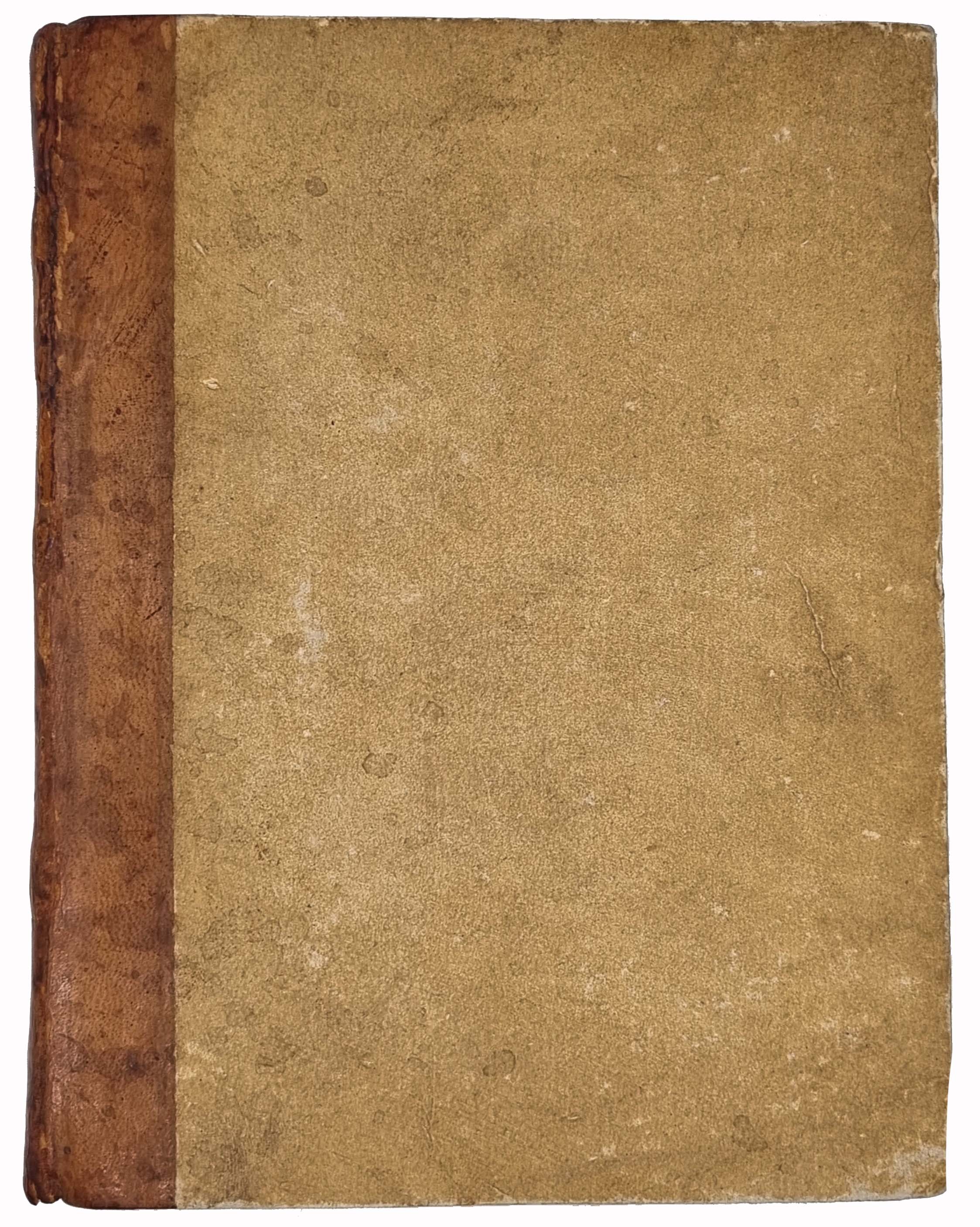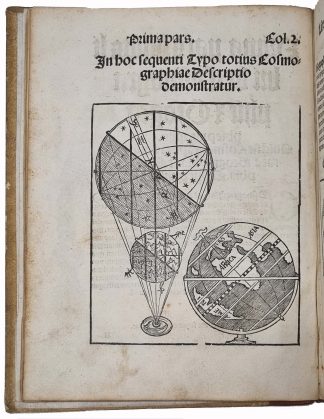APIANUS, Petrus.
FAMOUS ILLUSTRATED SCIENCE
APIANUS, Petrus. Cosmographicus Liber.
[Landshut, Peter Apian, Johann Weißenburger, 1524].£64,500.00
FIRST EDITION. pp. [8], 104, [6], lacking final blank. Gothic letter. Title in red and black, large woodcut globe, large woodcut arms of Archbishop of Salzburg (dedicatee) in red and black to verso of title, large woodcut armillary sphere in red and black to [*]4 verso, 46 full-page or smaller woodcuts of globes, astronomical diagrams or instruments, maps and eclipses, 4 volvelles (on pp.17v, 24v, 63r and +1v, plus 2 movable parts pasted at blank foot of last), 1 supplied, numerical tables, decorated initials and ornaments. Slight foxing along edges, heavier to title, light age yellowing, light browning to 2 volvelles as often on 17r, +1v and the 2 pasted parts, occasional minor finger-soiling. A very good copy, on thick paper, in c.1700 quarter sheep over paper boards, spine gilt, gilt-lettered label, a bit scuffed. Early ms. annotations at foot of p.4, contemporary editorial ms marginal corrections to p.23.
The scarce first edition of this lavishly illustrated work on cosmography, astronomy, cartography and navigation – a most famous Americanum and a ground-breaking landmark in the history of scientific illustration. ‘One of the first European books to depict and discuss North America, [equipped with] movable volvelles allowing the readers to interact with and use some of the charts and instrument layouts presented’ (MAA).
A pioneer in the popularization of astronomy and cartography, Apianus (1495-1552) studied mathematics at Leipzig and Vienna. His first printed work was a world map (1520), based on Waldseemüller’s famous gores – the second in print to use the name ‘America’. ‘Cosmographicus Liber’, which earned Apianus a professorship, was a very successful textbook, translated into most European languages throughout the C16 and later expanded by the mathematician Gemma Frisius. Largely based on Ptolemy, it begins with the definition of cosmography – ‘a broad science of the Renaissance which set out to explain everything in the universe within a mathematical framework’ (Barentine, p.147). In fact, ‘cosmography was fundamentally concerned with using projective geometry to connect the heavens and the Earth, and, frequently, to relate solar motion, terrestrial location and time’ (Whipple, p.58). Part I discusses the movements of the spheres, the 5 climatic zones, the elevation of the poles, how to calculate latitude and longitude, as well as the distance between places, using instruments, eclipses and the winds. Part II deals with the four continents (with a chapter on America), providing the latitude and longitude of major locations, including Guadalupe, Brazil, Cuba, Cabo de Buenaventura and Rio de Santiago, how to calculate the hours of day and night, as well as heights, etc. A great part is devoted to the use of contemporary astronomical instruments, e.g., the armillary sphere and the ‘scala geometrica’. The C16 annotator of this copy noted down the dates of the winter and summer solstice, ‘8 days before the Kalendae of January’ (December 25) and ‘8 days before the Kalendae of July’ (June 24), with reference to the Julian calendar.
Appearing for the first time, the book’s volvelles – revolving paper instruments printed onto separate sheets, cut and assembled either at the press or by the binder or the reader – were ‘its main selling point and principal innovation’. Whereas earlier books of similar content were largely constructed around sets of tabular information, Apianus’s volvelles turned the pages of “Cosmographicus Liber” into functional computers, enabling skilled users to make calculations involving navigation, distances and time’ (Barentine, p.152). They were often, as the 4 in this copy, printed or mounted on scrap paper from other books (Drennan, p.320). The 2 movable parts glued to the last verso were intended to be detached and used to build a small nocturnal clock, the model for one of several instruments Apianus was selling at his workshop. ‘The symbiosis between cosmography and instrument-design not only made cosmographical treatises depict actual instruments, but also led to occasional brass implementation of paper instruments contained in these treatises’ (Vanden Broecke, p.141).
Published 31 years after the first announcement in print of Columbus’s discovery, ‘Cosmographicus Liber’ illustrates America in a woodcut globe (p.2) and famously, for the first time, on a volvelle (p.63). It also includes a chapter about America – discovered in 1497’, a date shared by other German sources, with no mention of Columbus – which begins: ‘America, now the Fourth part of the Earth, is so called after its discoverer, Americo Vespucci. […] it is referred to as an Island as it is surrounded by the sea.’ The 1-page account describes the native inhabitants as ‘anthropophagi’, mentions their traditional clothing, customs, cults and rites, as well as the names of surrounding islands (e.g., Cuba).
This is one of two recorded variants of the first edition. All copies of this variant we have seen bear the same editorial revisions on p.23, in this copy in the same hand as the BL copy. A total of 4 volvelles plus the (very uncommon) 2 movable parts are called for by Borba de Moraes and found in the BL copy and in the present. Alden cites 4 volvelles, and no movable parts; the Whipple, Harrisse and Ortroy only call for 3 volvelles.
USTC 625636; Alden 524/2 (4); Harrisse, BAV, 127 (3); Ortroy, Apian, 22 (3, fols 17, 24, 63); Sabin 1738 (2); Borba de Moraes, Bib. Brasiliana, I, 35 (4 + 2 movables parts); VD16 A 3080; Zinner 1230. Numbers in parentheses indicate number of volvelles. J.C. Barentine, Uncharted Constellations (2016); A.S. Drennan, ‘The Bibliographical Description of Astronomical Volvelles and Other Moveable Diagrams’, The Library, 13 (2012), pp.316-39; The Whipple Museum of the History of Science (2019); Vanden Broecke, ‘The use of visual media in Renaissance cosmography’, Paedagogica Historica, 36 (2000), pp.131-50.


